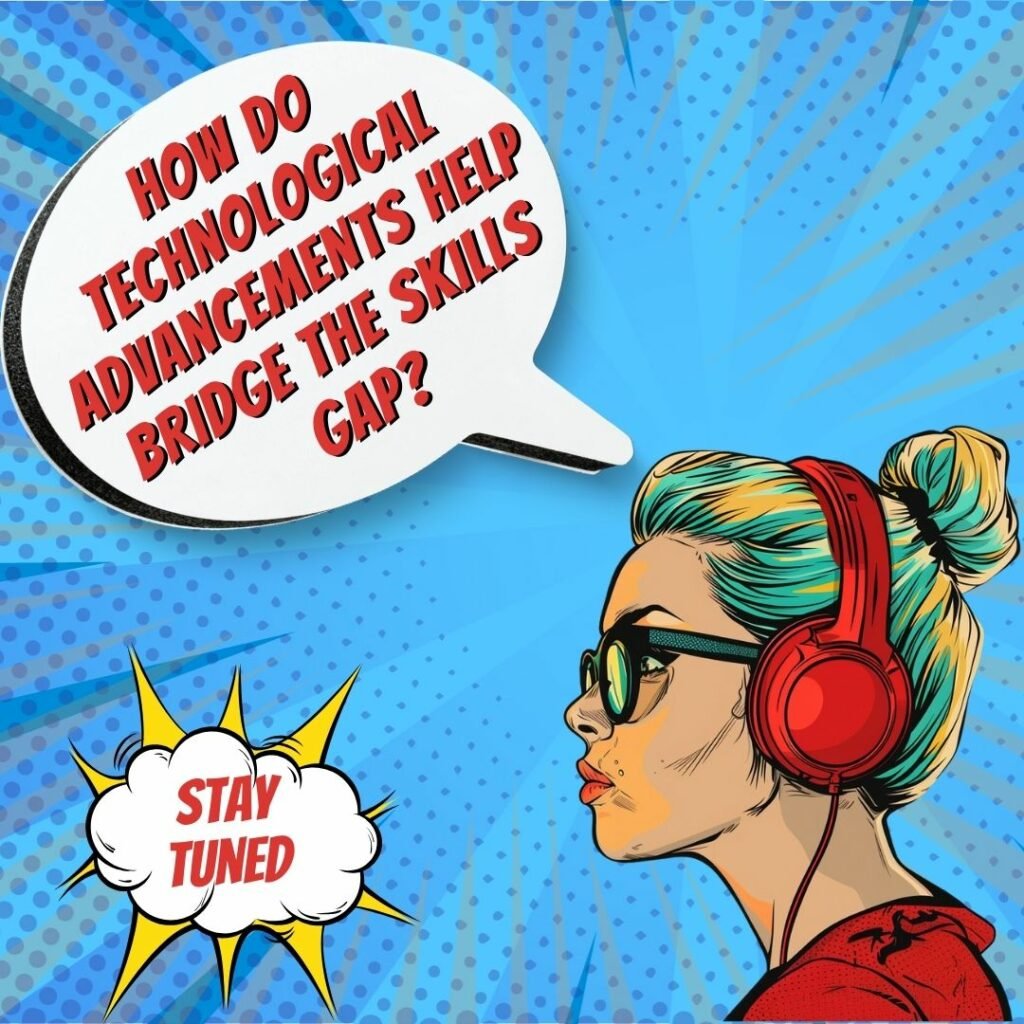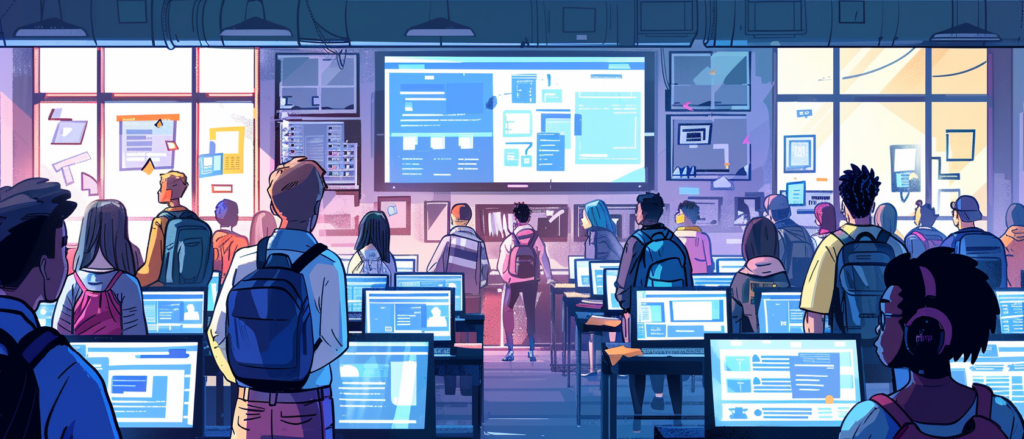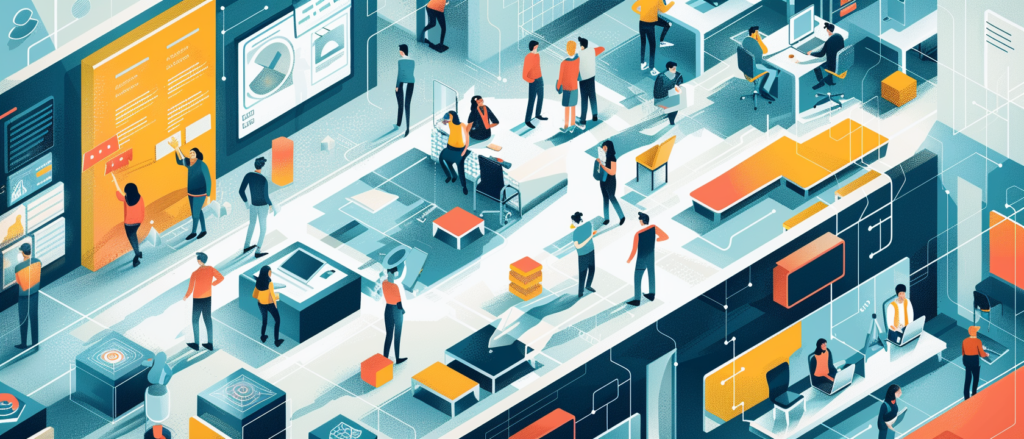Key Takeaways
✅ Identify and Address the Causes of Skills Gaps: Rapid technology changes, evolving job roles, and shifts in the workforce are big reasons why skills gaps happen. Understanding these reasons is important for creating strategies that work. Almost 74% of companies recognize the skills gap, but fewer than half know how to fix it. The first step? Identifying the gaps through surveys and data analysis.
✅ Leverage eLearning and Digital Tools: Online learning and digital resources offer flexible, varied training options that can help close the skills gap. With over 50% of all employees requiring significant reskilling by 2025, digital solutions like competency assessments and tailored training plans are essential. Plus, it's a bonus that employees can learn at their own pace.
✅ Prioritize Continuous Learning and Development: The value of skills is changing faster than ever, making constant learning vital. Organizations that invest in ongoing education encourage better performance and loyalty. Studies suggest that companies emphasizing upskilling are 20% more likely to retain their talent.
 Introduction
Introduction
Are you ready to tackle the biggest challenge of the digital age in your organization? Bridging the Skills Gap with Technological Advancements is no longer just an option; it's a necessity for staying competitive and innovative. As the world leaps forward with technology, the gap between what skills employees have and what they need is growing wider. From automation to artificial intelligence, the landscape of work is changing, and with it, the demand for new skills.
In this comprehensive look at the skills gap, we’ll dive into the main causes, the incredible role of technology, and practical strategies employers can use to not only bridge this gap but to thrive. We'll explore everything from the importance of soft skills in an automated world to the latest trends in eLearning and digital tools that are reshaping how we equip our workforce for the future. Get ready for a journey through innovation, where you'll discover actionable insights and groundbreaking information designed to transform your approach to skills development and ensure your organization not only keeps up with the digital evolution but leads the way.
Top Statistics
| Statistic | Insight |
|---|---|
| Over 1 billion people need to reskill by 2030 to keep up with the changing job market. | This staggering number highlights the urgent need for workforce transformation and the crucial role of continuous learning in future employment. |
| 87% of companies worldwide are aware they have a skills gap. | The majority recognition signifies a global acknowledgment that addressing skill shortages is paramount for business sustainability and growth. |
| The digital skills gap could lead to an $11.5 trillion GDP loss across 14 G20 countries. | This forecast underlines the economic implications of not addressing the skills gap and stresses the importance of digital literacy for economic health. |
| 64% of L&D professionals prioritize reskilling the current workforce. | Focusing on upskilling reflects a proactive approach to bridge the gap, ensuring that the current workforce can meet emerging demands. |
| 82% of employees believe they need to reskill or upskill at least once a year. | This perception from the workforce highlights the fast pace of technological change and the ongoing need for skills development to keep up. |
Understanding the Skills Gap
When employers scratch their heads, wondering why they can't find the right candidates, or when workers feel like they're always a step behind in their skills, it's the skills gap glaring back at them. This gap's roots dig deep, intertwined with quicksilver technological advancements, demographic shifts, and even global market pressures. Imagine having a key, but every time you reach the lock, it changes. That's what rapid innovation does to job requirements. This gap doesn't just leave jobs unfilled; it's a span where productivity dips and aspirations seem just out of reach for many. The businesses? They're left in a tough spot, competing on a global stage with one hand tied behind their backs.
The Role of Technology in the Skills Gap
Technological advance is a double-edged sword. On one side, it's the future—automation and AI transforming the workplace in ways we're just beginning to grasp. Yet, it's also outpacing our educational institutions, leaving a chasm where job requirements evolve faster than we can learn. This shift isn't just about learning to code or mastering a new software—it's about adapting, solving problems on the fly, and communicating across diverse teams. The tools are changing, but so are the rules of engagement.
Bridging the Gap: Strategies for Employers
Upskilling and reskilling are not just buzzwords; they're lifelines for businesses and employees swimming in these uncharted waters. Digital certificates and badges aren't just accolades; they're proof of survival—evidence that you can teach an old dog new tricks, or in this case, new roles. Training isn't a one-time affair. It's continuous, evolving with the technological landscape. Employers are finding value in bringing growth opportunities to the table—ways to climb the ladder without jumping ship. It’s a win-win; businesses retain talent, and employees see a future where they're valued.
The Importance of Soft Skills
In this whirlwind of change, it's easy to forget the human element. Soft skills like empathy, communication, and adaptability are becoming the unsung heroes. They're what makes a team more than just a sum of its parts. Integrating these skills into technical training isn't just an afterthought; it's essential. They're the glue in a digitally fragmented workplace, leading to teams that can weather change and organizations that stand resilient in the face of adversity.
The Future of Skills Development
What does tomorrow look like? For one, it’s digital, interwoven with threads of AI, cybersecurity, and cloud computing. But predicting the future isn't just about guessing the next big tech breakthrough. It's about preparing, through policies that make skill development accessible to all and initiatives that encourage hands-on learning. The landscape is changing, and with every shift, new vistas of opportunity open. It's a world where adaptability isn't just an asset; it's a necessity.
Government and Policy Initiatives
Stepping into the future requires a foundation—a system where learning and skill development are within everyone's reach. Governments have a role, crafting policies that bridge rather than widen the gap. From apprenticeships to internships, the aim is clear: create pathways that lead not just to jobs, but to careers. These aren't just solutions; they're investments in a collective future, ensuring that the workforce isn't just skilled for today but ready for tomorrow.
The journey across the skills gap isn't a solo venture. It’s a collective march, stepping in tandem with technology, ready to face the changing tide together. By weaving policies with corporate strategies, and tempering tech with tenderness, the gap doesn't just narrow—it becomes a stepping stone to a future rich with possibility.
AI Marketing Engineers Recommendation
Recommendation 1: Bridge the Skills Gap with Technological Advancements: Implement comprehensive upskilling programs that are data-informed, targeting skills in high demand yet in short supply within your industry. According to a 2022 LinkedIn report, 59% of companies globally are investing more in their learning and development (L&D) budgets to address the talent shortage. Tailoring these programs to the specific needs of your business and the evolving demands of the market can markedly improve your team’s proficiency and productivity. By identifying key areas where skills are lacking and focusing your training efforts there, you can ensure your workforce is well-equipped to handle current and future challenges. This proactive approach not only enhances employee capabilities but also boosts overall organizational performance.
Recommendation 2: Utilize AI and Machine Learning for Personalized Learning: Adopt AI and machine learning technologies to personalize the learning experience and make it more effective. Current trends indicate a shift towards adaptive learning platforms that can assess an individual's knowledge base and learning pace, adjusting the training material accordingly. This approach not only accelerates the learning process but also maximizes retention rates. By leveraging these intelligent platforms, businesses can provide their employees with the tools they need to master new technologies and methodologies. This personalized approach ensures that each team member receives training that is specifically tailored to their needs, leading to more efficient skills acquisition and closing the skills gap more effectively.
Recommendation 3: Introduce Real-Time Analytics to Optimize Training: Introduce real-time analytics tools to continually assess and adjust training strategies. These tools can provide immediate feedback on the effectiveness of training programs, allowing for quick modifications to optimize outcomes. For instance, if data shows that certain topics or formats are not resonating well, you can swiftly pivot to more effective methods or materials. This ongoing assessment helps ensure that the investment in L&D yields the highest return, crucially supporting your goal of bridging the skills gap with technological advancements. By regularly monitoring and refining your training initiatives, you can maintain a high standard of education and ensure that your workforce remains agile and capable in a rapidly evolving industry.
Relevant Links
- Unleash the Power of AI in Digital Marketing!
- Unlock Market Penetration Success
- Boost Your Ads with Creative Optimization
- Maximize ROI with Performance Metrics
- Strategies for Revenue Growth
Conclusion
In wrapping up, the challenge of the skills gap is more than just an issue for today's HR departments; it's a pivotal puzzle impacting our future workforce's readiness. As we've unpacked the causes, from rapid technological advancement to changing demographics, it's clear this isn't a small-scale problem. However, the beacon of hope lies in technology itself, coupled with a strategic approach towards upskilling, reskilling, and fostering soft skills among employees.
Employers are at the frontline of this battle, armed with training programs, digital badges, and an emphasis on continuous development, showcasing that bridging the skills gap is not only feasible but within reach. The commitment to developing a workforce that is both technically proficient and rich in soft skills like teamwork, communication, and adaptability promises to redefine the landscape of employment and productivity.
Looking forward, the intersection of anticipating future skill sets and fostering environments that prioritize continuous learning points to a workforce that is resilient, adaptable, and more than capable of meeting the demands of tomorrow's economy. Policies and initiatives that support skills development, from governmental to organizational levels, will be critical in this journey.
As we stand at this crossroads, the call to action is clear: embracing technological advancements and the development of a comprehensive skill set comprise our best strategy in preparing for a future that is already knocking at our door. Let's think of this not as a challenge to overcome but as an opportunity to ensure a thriving, dynamic workforce ready to embrace the changes and challenges of the 21st century. Embracing this mindset is essential for businesses, educational institutions, and individuals alike, as we move forward in creating a world where everyone has the opportunity to succeed and contribute meaningfully.
FAQs
Question 1: What is the technology skills gap?
Answer: It's when there's a big difference between the tech skills that companies need and what people actually know. Think of it as trying to fit a square peg into a round hole because the tech world moves so fast, and sometimes we're all trying to catch up.
Question 2: What are the main causes of the skills gap?
Answer: This gap pops up for lots of reasons like crazy-fast tech changes, new kinds of jobs that didn't exist before, people moving around the globe, the ups and downs of the economy, and robots and software taking over some tasks.
Question 3: What are the consequences of the skills gap?
Answer: When this gap gets wide, projects can get stuck, companies might not do as well, and it can even mess with the economy big time. On a bigger scale, it can lead to tougher times for folks, with more people struggling to make ends meet, and it can push people to move away from their homes and cause other big social problems.
Question 4: How can upskilling and reskilling help bridge the gap?
Answer: By learning new stuff or brushing up on skills to fit into new roles, people can stay in the game. It's about keeping the learning engine running and making sure we're all ready for what's next.
Question 5: What role do apprenticeships play in bridging the gap?
Answer: Apprenticeships are like getting the keys to the castle. They let you dive into real work, learning by doing, and getting tips and tricks from people who've been around. It's a solid way to get the skills that businesses really need.
Question 6: How can soft skills be integrated into technical training?
Answer: It's not just about the techy stuff. Things like chatting well, solving problems without freaking out, and working smoothly in teams are super important too. Weaving these skills into tech training can make work better for everyone.
Question 7: What steps can companies take to bridge the digital skills gap?
Answer: Companies can get their game on by setting up training that really means something, making sure the digital shift works for everyone, and showing people clear ways to move up and earn more. It's all about making learning fit with what each person is good at.
Question 8: How can individuals keep up with the rapidly evolving technology industry?
Answer: Keep your learning hat on, all the time. Dive into training, grab chances to learn on the job, and find people who can show you the ropes. Staying flexible is key to keeping up with tech's wild ride.
Question 9: What is the importance of collaboration between education and industry?
Answer: When schools and businesses work together, magic happens. It means learning will really get you ready for the jobs out there, helping close that pesky skills gap and getting everyone prepped and pumped for what's to come
Academic References
- Bridging the Skills Gap in Technical, Vocational Education and Training (TVET): This study examines best practices in TVET school-workplace collaboration to bridge the skill gap and meet manpower needs in the 21st century. Journal of Vocational Education & Training, 68(1), 1-17. This research highlights the potential of integrating vocational training with industry demands through collaborative efforts to ensure the preparedness of students for modern workforce challenges.
- Bridging Technical Skills Gaps between High School Students and Industry: This study explores how technical skills taught in engineering and engineering technology-themed career academies can be aligned with industry needs to bridge the skills gap. Journal of Technology Education, 31(2), 30-45. By focusing on specific case studies, this paper identifies critical alignments and disparities between educational curriculums and industry technical requirements.
- Bridging the Gap Between Acadmia and Industry: The creation of technological firms can serve as a bridge between academia and industry, ensuring that newly trained professionals possess essential knowledge, skills, and abilities. Technology in Society, 53, 100-109. This innovative study addresses how the strategic formation of tech startups can facilitate a smoother transition for graduates entering the technological sector, thereby narrowing the skills gap.
- Bridging the Gap Between Tech and Soft Skills in the Workforce: Employers are seeking applied skills, including both hard tech skills and soft people skills, and professional development programs can help bridge this gap. Human Resource Development Quarterly, 29(4), 305-331. This article provides an insightful analysis into the growing need for a workforce proficient in both technological proficiency and soft skills, suggesting pathways for educational reform and professional development.






